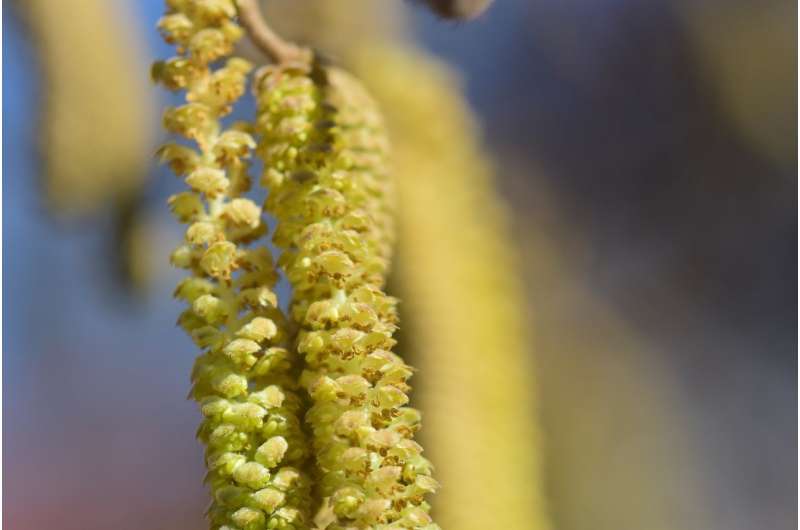New bug helps in annual hay fever battle

The pollen from common ragweed Ambrosia artemisiifolia causes pollinosis, also known as hay fever and respiratory diseases. The dominance of this exotic and invasive ragweed in parts of central Europe ensures that many people have tablets and tissues at the ready when summer comes around. And climate change makes it likely that ragweed, which originates from the U.S., will spread even further.
But the unexpected arrival of an insect from outside the continent may be reducing the misery of hay fever sufferers, and saving money at the same time. Ophraella communa, known as the North American ragweed leaf beetle, loves eating ragweed and has been indulging itself since it was unexpectedly found to be in Europe in 2013. It was first discovered near Milano Malpensa airport, where it may have been accidentally released from flights from the USA and China.
The COST network SMARTER, Sustainable management of Ambrosia artemisiifolia in Europe, has not only helped spread knowledge of the beetle's great usefulness in reducing pollen production and limiting growth of ragweed populations, but also that risks for other plants, like sunflowers, are small.
SMARTER was led by Professor Heinz Müller-Schärer from the University of Fribourg in Switzerland. "Thanks to COST, we have been successful in getting together experts from weed science and invasion science, as well as from health, economy and social sciences," says Professor Müller-Schärer.
"This unique combination allowed setting up interdisciplinary international collaborative projects, and the problem was discussed at a European scale. Ragweed is an issue in so many European countries. There were a lot of people involved in researching it, but it was not coordinated at all. Using natural enemies of invasive plants was also appealing, because this is quite new in Europe."
The 250 researchers from 35 countries involved helped SMARTER to a series of achievements. These included highlighting the benefits and risks of using the beetle, including the economic benefits. They estimate that control of ragweed pollen thanks to the beetle alone in the Rhone-Alpes region of France could save 10m euros of health costs annually. Another was a forward-thinking increase in knowledge about understanding and managing weeds and plant invaders by training young experts from this field, especially focusing on new methods such as biological control and sophisticated vegetation management.
And SMARTER also had a positive impact for Dr. Suzanne Lommen, a young colleague of the professor in Fribourg. She was researching the demography of ragweed and the effect of the leaf beetle, but helping to coordinate SMARTER and the people involved boosted her own work.
"Thanks to COST I involved researchers from 17 countries in what has now become the world's largest demographic study of ragweed," Dr. Lommen declares. "Running such a large and international network was new to me, but I learned how to deal with finances, about project and data management. It was a great experience."
Provided by European Cooperation in Science and Technology (COST)


















